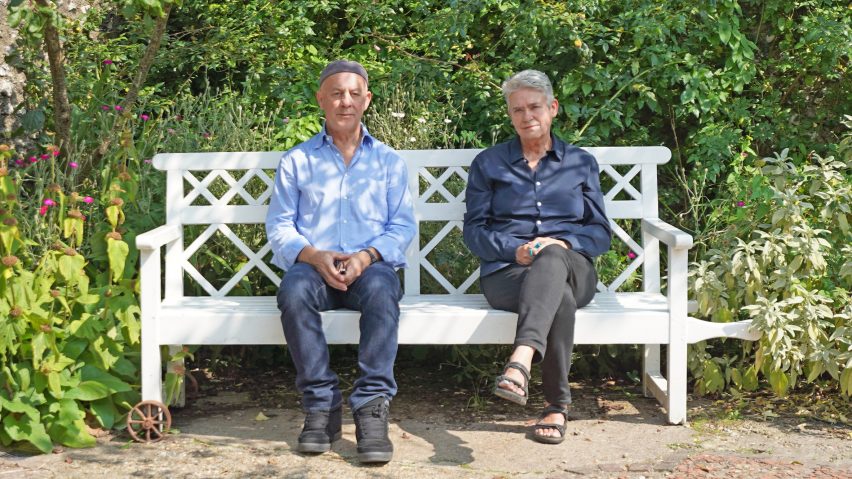
"It's amazing how things flip" from utopia to dystopia say artists Langlands & Bell
A new exhibition by Ben Langlands and Nikki Bell explores how architects have tried, and usually failed, to create utopias. In this exclusive interview, the artists explain why architecture plays a central role in their art.
"For us, architecture is a way of getting to grips with who we are as people on the personal level, the social level and the cultural level," said Langlands.
"It's about people and relationships," added Bell.
Langlands & Bell have long combined furniture with architectural models and plans to explore how buildings affect their users.
Ideas of Utopia, a new exhibition by the English duo at Charleston in East Sussex, presents artworks exploring utopian projects over the centuries.
"The 20th century was a century of people dreaming and trying to realise utopias, and implementing them very ideologically and in a sense dogmatically, and then coming to terrible grief," said Langlands over lunch in the historic kitchen at Charleston, the farmhouse home and studio of twentieth-century painters Vanessa Bell and Duncan Grant.
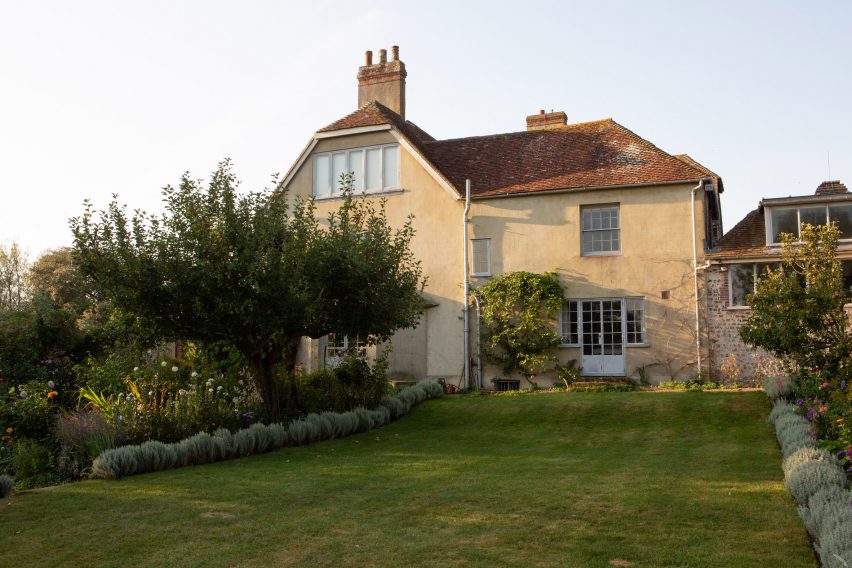
Bell and Grant were key figures in the Bloomsbury Group of English artists, writers and thinkers who were influential in the early years of the twentieth century and Charleston was for a time a hotbed of radical anti-bourgeois thought.
Langlands & Bell have overseen three exhibitions here with the central one, titled "Langlands & Bell: Ideas of Utopia", responding to this rural artists' paradise with a collection of their own works including their exploration of Ivrea, the town built for Olivetti workers in northern Italy.
"Even though they used the best architects of the time and were very progressive and many of the buildings are really beautiful, it still ends up as a very controlling environment," said Langlands.
"People find it difficult to live with that on a daily basis."
More recent works explore the giant headquarters of digital giants including Apple, Google and Facebook.
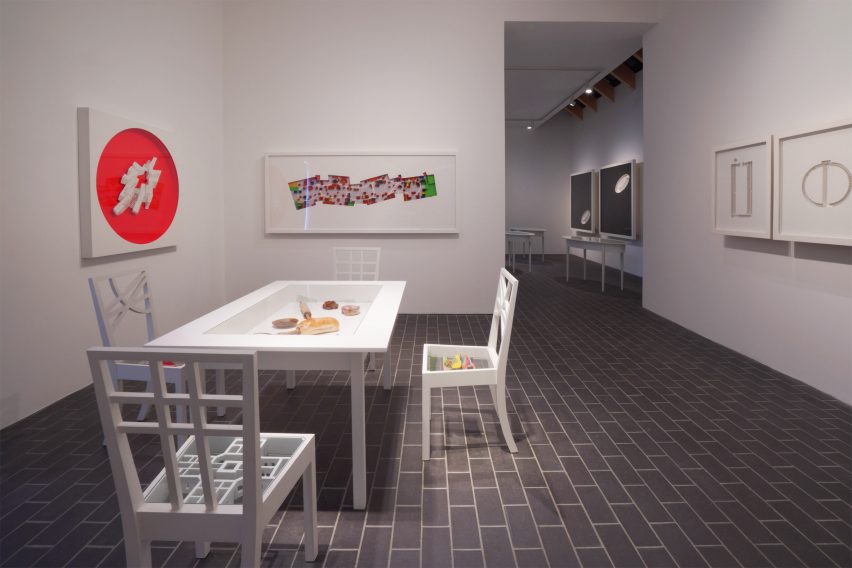
While designed to be utopian for their workforces, these idyllic megastructures belie the data harvesting, surveillance and aggressive monetisation of users that their owners engage in.
"It's amazing how things flip from utopian ideas and startups to control," said Bell.
See below for an edited transcript of the interview:
Marcus Fairs: Tell me how you met and started working together and particularly how your art came to embrace architecture and the idea of utopias.
Ben Langlands: We met in 1978 when we were students at Hornsey College of Art [which later became part of Middlesex University]. It was at Ally Pally [Alexandra Palace] before it burned down. They had that terrible fire [in 1980].
We became friends. We just thought, as an experiment, why don't we make a work together? That was how we made that work The Kitchen.
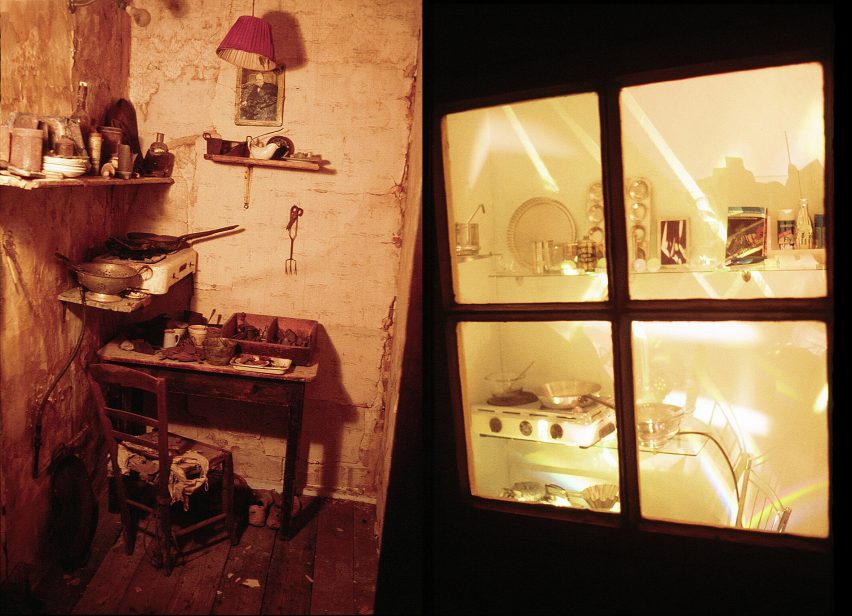
Nikki Bell: This piece no longer exists because there was an arson attack and the whole art school burned down, unfortunately.
There was an old kitchen and a new kitchen. You entered this very filthy, tiny space and you could see the cooker and the congealed fat and the smell of the gas being lit and the old rusty cutlery and the hand-carved rolling pins. Everything was rusty and time-worn.
And there was a window and through it, there was a brand new kitchen. It's a mirror image of the old kitchen but you couldn't enter it. It was a kind of unobtainable utopia.
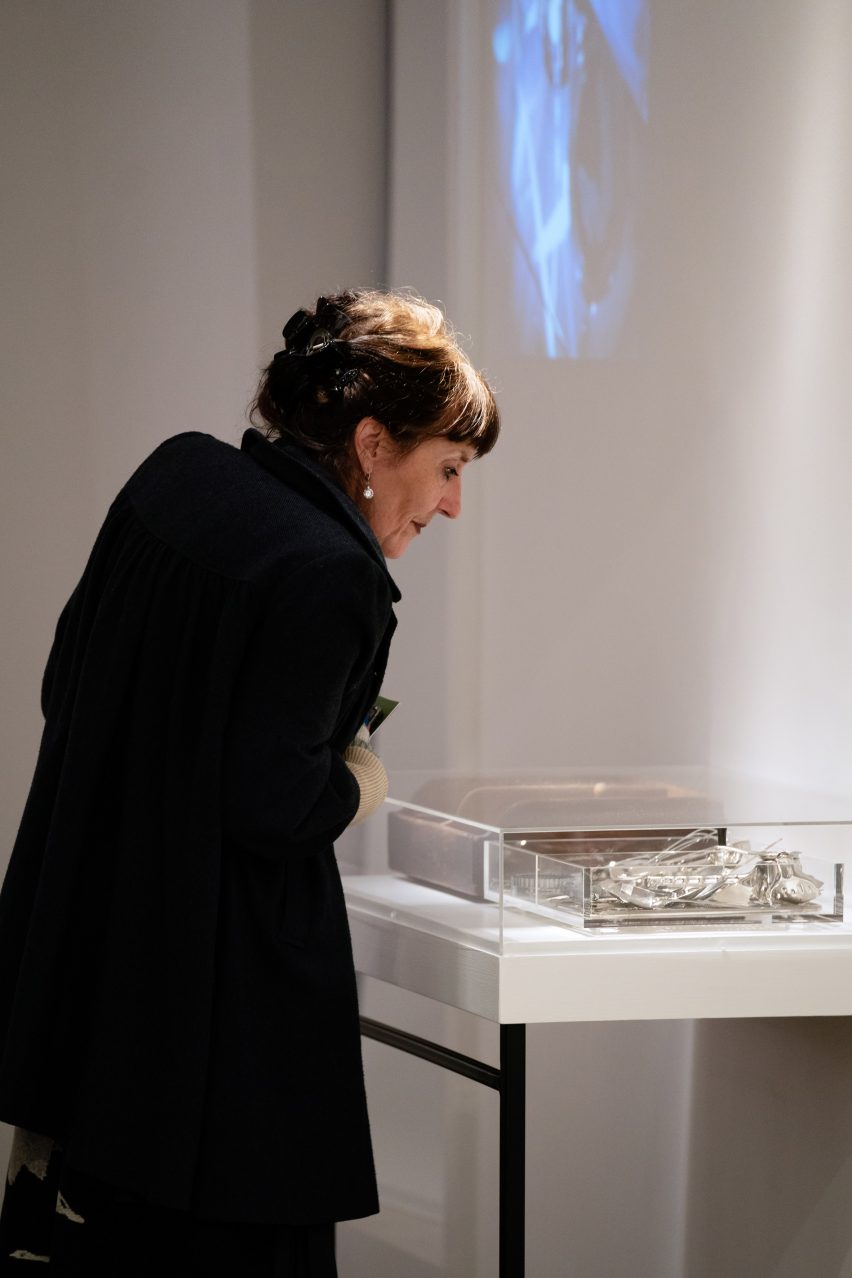
Ben Langlands: It's a kind of pound-store utopia and a dystopia side by side. Our original idea was that Nikki would make the old half and I would make the new half. But as soon as we started doing it, we just realised it was more interesting and easier to help each other and do the whole thing together. Then we just carried on working together.
Nikki Bell: It was quite an organic thing. The art school we went to was totally unstructured. You could move in any direction. You could move from prints to painting, to photography to video, from 2D to 3D. So there was something magical about being able to collaborate. We were the first artists there to collaborate on a joint degree. And we just carried on working together.
Ben Langlands: At that time, one of the things we both loved was exploring ruined buildings and abandoned places. London was very economically depressed in those days. There were lots of empty, abandoned buildings awaiting demolition.
Nikki Bell: Particularly in the East End, which is where we gravitated to. It was cheap. There were all these little tiny workshops and lots of markets. It was a real thriving counter culture.

Ben Langlands: So we started making works exploring these environments that were from a kind of disappearing world. In those days, lots of houses still have outside loos. They had Anderson bomb shelters in the backyard. There were quite a few that were still gaslit. It was pretty primitive by today's standards.
We just found that whole thing fascinating. Often, there were people's personal belongings left in these spaces, and we would go and look at them out of curiosity.
Nikki Bell: You could find incredible things in skips. You could open doors off the street into derelict buildings in Brick Lane, and go and explore these amazing houses and structures with traces of the inhabitants and all their needs.
It was very layered. There was everything from the Irish to Huguenots, to the Bengalis, the Jews, all these cultures and this very rich material around us to draw from.

Marcus Fairs: What is your working process?
Nikki Bell: We explore. We love exploring. We take photos, we take videos, we, you know, we really want to get under the skin of something.
Marcus Fairs: Did you grow up in London?
Ben Langlands: We're both Londoners but we're from west London.
Marcus Fairs: So the East End was like a new world.
Nikki Bell: Yeah.
Ben Langlands: In those days, the installations we did were called environments. We make these environments. And so some ways we were combining interiors as a kind of narrative device or conceptual device.
We were also making furniture because, at the time, we were restoring buildings for people to earn a living because we didn't have any money. And we would repair the building and also make new furniture for them or a new kitchen or bathroom or whatever. And so we started turning those skills into our art.
Nikki Bell: And so we made a work called Traces of Living where we put some of the objects that we gathered from the East End under glass like a vitrine [set within the seats of chairs and the top of an elongated table].
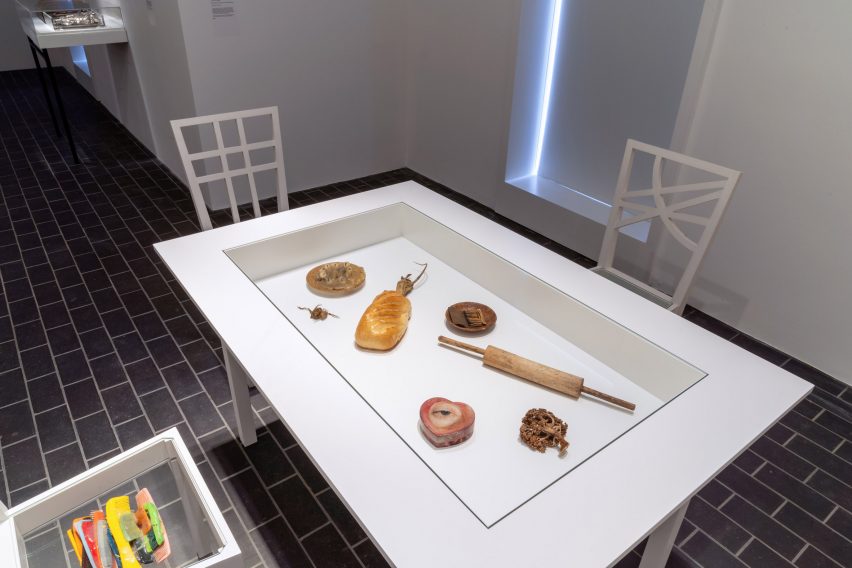
Ben Langlands: They were objects that would never normally be in a museum.
Nikki Bell: We first showed it at Maureen Paley's Interim Art gallery. She had a house inside her gallery. The gallery and the house were sort of interchangeable. So that was quite a utopian notion at the time. People could just drop by off the street and visit a gallery in her home.
Marcus Fairs: A lot of your work is has a relationship with architecture. Was that something that you were conscious of from the beginning?
Nikki Bell: Architecture surrounds us!
Ben Langlands: It's only about architecture on one level.
Nikki Bell: It's about people.

Ben Langlands: It's about people and relationships. For us, architecture is a way of getting to grips with who we are as people on the personal level and the social and cultural level.
Marcus Fairs: How did your interest in architecture begin?
Ben Langlands: In 1986 we were asked to make an architectural model. That was definitely a pivotal, pivotal moment.
Nikki Bell: It was for the National Gallery.
Ben Langlands: It was to earn money. We were doing some work for an architect and he needed an architectural model. He said: I think you could do this, can you make it for me?
They were putting air conditioning and heating plant in the National Gallery and they wanted a model of the basement to work out where to route all the ducting and place the plant.
So they gave us the plans and we made this model. And we were fascinated by it. So once we'd made the model and given it to them we decided to make our own model and put it in the seat of a chair.
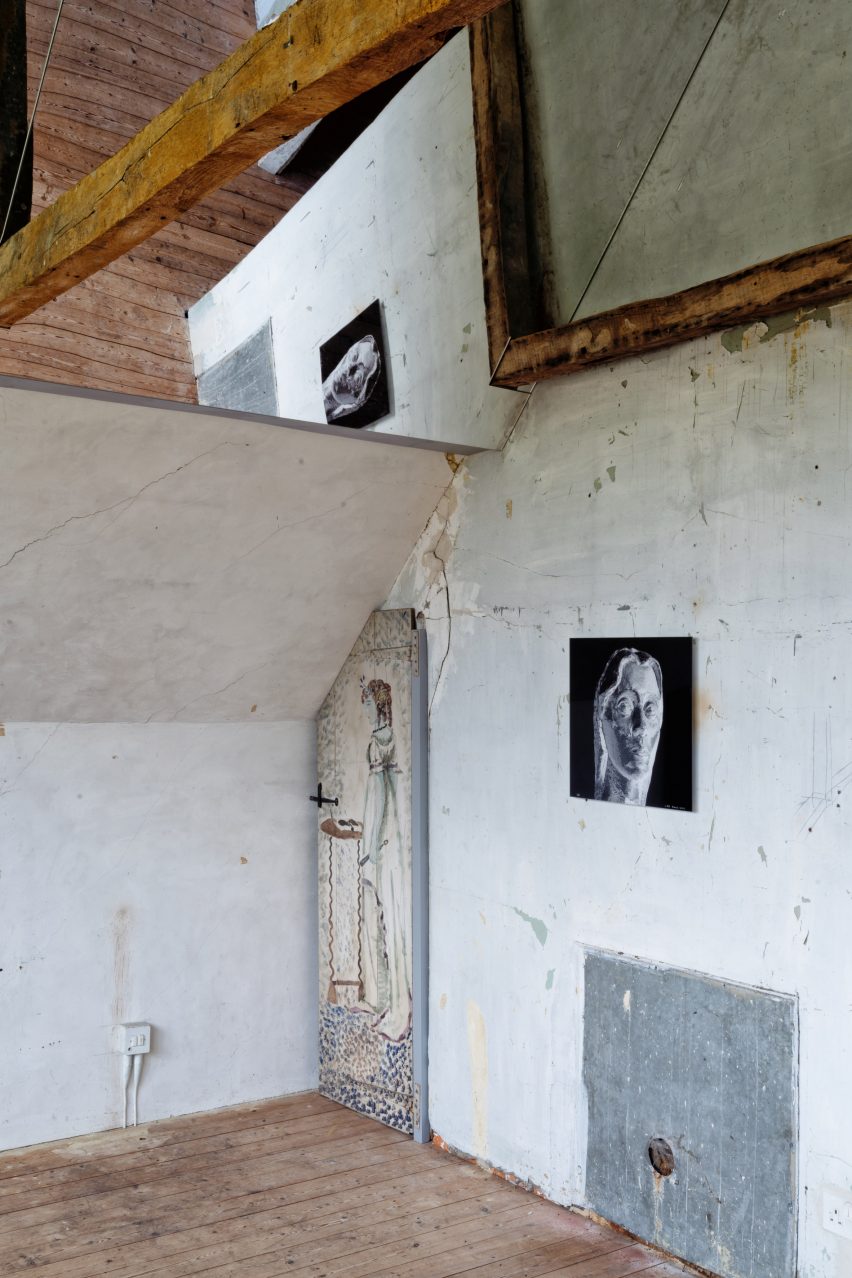
Nikki Bell: This formed part of Traces of Living. We lit the chair from above so that the plan of the model was cast as a shadow on the floor below, alluding to the way we’re all imprinted with buildings as we use them.
Ben Langlands: And at that moment, we realised that by doing this, you can start talking about all these issues in a whole other way.
Marcus Fairs: So that was a moment of crystallisation. Did that change the trajectory of your work?
Nikki Bell: Very much so because it sort of led us to look at topics and themes that we were interested in.
Ben Langlands: After putting the model in the chair, we then made a work where we displayed models on the wall like pictures. We found the plans of Villa la Rotunda by Palladio, the museum and the museum of modern art by Hans Hollein in Frankfurt, and Jeremy Bentham's Panopticon. We used to go to the RIBA library and just look at the books.
Nikki Bell: We loved looking at the plans.
Ben Langlands: In those days, anybody could walk in and just start researching for free. You didn't have to pay. You didn't have to be a member or anything. Nobody ever stopped you. So it was a great resource.
So we did this and we were just fascinated by the plans. We just started putting the plans together. And we realised we could make pictures and sculpture; we could use furniture to talk about the body and relationships within the building by incorporating models within the furniture. Furniture and architecture are so intimately related.
Nikki Bell: Furniture mediates between the body and the building.
Ben Langlands: It describes how we use buildings. If you look at the furniture of a school or courthouse or a restaurant or prison or a private house, even if nobody's there, it can tell you how the spaces are being used and what people do with them.
Marcus Fairs: Do you have a relationship with architecture as a profession, with the culture of creating new buildings?
Nikki Bell: Yes. Well, we certainly know a lot of architects as well because our world does overlap with art and design. So we're lucky to be in this sort of position that allows us access. But we're looking at them in a different way from an architect.
Ben Langlands: We're trying to understand them in a way.
Nikki Bell: They're already built as structures. So we're not trying to please a client by showing them a plan.
Ben Langlands: We're asking why they are like they are and how they do what they do.
Marcus Fairs: You created a series of works called Internet Giants: Masters of the Universe based on the headquarters of giant companies including Apple, Google and Alibaba. How did that come about?
Ben Langlands: We started that series of work because when Osama bin Laden was killed, we saw in the media pictures and drawings of the building where he had been killed. And we thought, well, we ought to make a model of this, because we'd previously made a model of the way he had lived in Afghanistan.
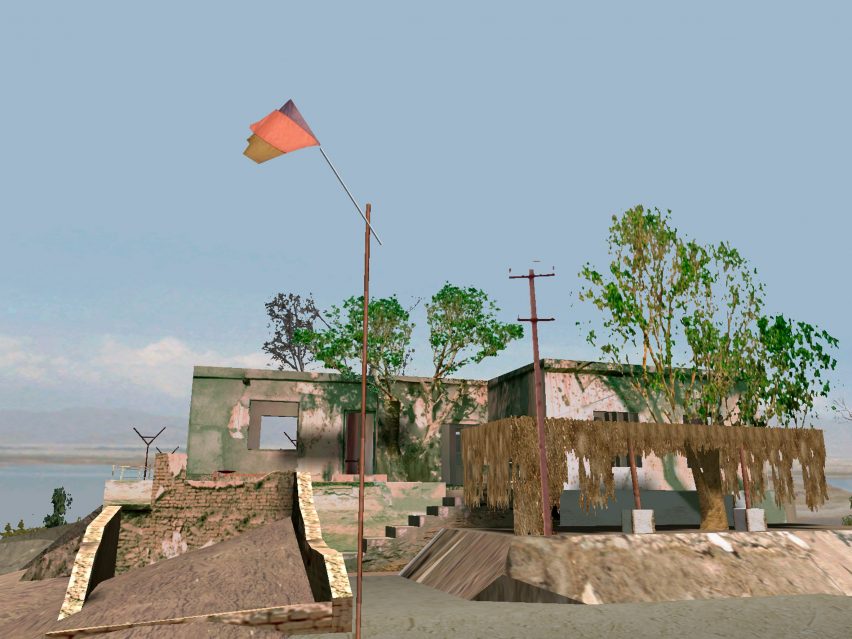
And so we made this model, but then we realised he'd been found because of his communications, because of the network of super surveillance that the world is kind of wrapped in now. So we started looking at the architecture of surveillance and we found the GCHQ building [home to the UK's intelligence monitoring service] and we thought it was likely they would have had a role in tracing him.
So we made a model of the GCHQ building and then suddenly, because it's a circular building on a huge scale, we found the new Apple building, which at the time was just being built.
And then we thought, my God, we suddenly realised what was going on in the world of the tech giants. They were now commissioning these huge new buildings by starchitects. You know, by Gehry, Heatherwick, and other people. And we realised that it was a moment of change.
Again, it was kind of a pivotal moment. These companies that started in garages were only 10 or 20 years old, started in people's spare bedrooms, and now they've moved to business parks and are now commissioning these huge buildings.
So we started researching that. We made models of lots of them because we thought it really said a lot about where we are now. We just found the whole thing fascinating. And in a way the models allow us to get to grips with this moment of kind of change; the time we're living through.

Nikki Bell: This super surveillance moment that we're all living through, clutching our phones. They're gathering all our data. They've got these anonymous buildings in the desert, which nobody even talks about or photographs. They have vast information about us all: where we shop; where we go. It's unbelievable.
Ben Langlands: They're very, very controlling about the way they're seen.
Ben Langlands: With those American HQ buildings in Silicon Valley, we downloaded the plans from the planning portal.
Nikki Bell: They wouldn't give us permission to use the plans, so we downloaded them ourselves.
Marcus Fairs: But you chose to make models of the spectacular HQ buildings rather than the giant server farms.
Nikki Bell: We might do both! We're not dismissing doing that. It depends where our work is leading us and where we want to explore.
Marcus Fairs: Do these kinds of buildings mark a change in architecture?
Ben Langlands: Certain things have changed. The facade obviously was the identity of the building coming from the Enlightenment, the neoclassical period. Then with modernism and the 20th century, you suddenly get "the plan is the generator", as Le Corbusier said.
And then at the beginning of the 21st century, the plan is kind of scrambled with the computer. Suddenly you can't talk about buildings in that way anymore. They're generated spatially in a sense.
If you look at a plan of a building by Zaha Hadid or many other people, nowadays, it doesn't make any sense. You can't get a sense of the building [it represents]. So the building has become a kind of object.
So, in a way, we've had to move with that. We've treated these buildings, we've treated them almost like objects or spaceships, or like moth specimens. So that's one change.
But another thing that's very interesting is that, paradoxically, something like the Apple building – this huge circular building – it's obviously about power and control but it's also about spectacle.
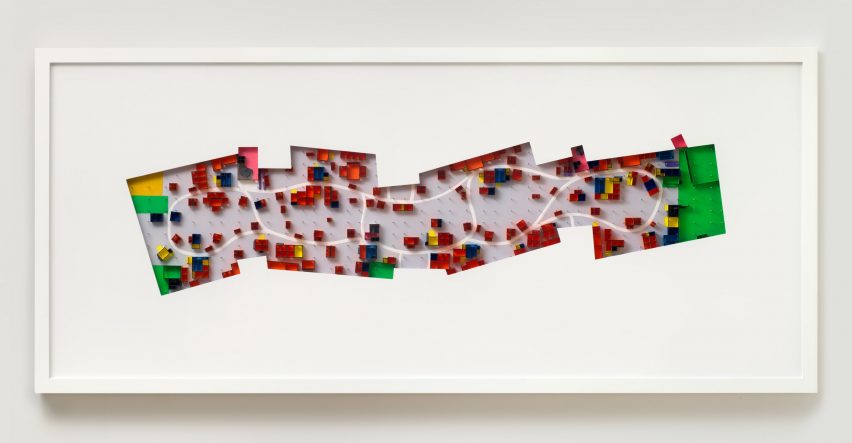
Nikki Bell: Like the Colosseum.
Ben Langlands: Or Stonehenge. These circular buildings are very ancient typologies and forms and they're used again and again and again. And the 20th century was a century of people dreaming and trying to realise utopias, you know, and implementing them very ideologically and in a sense dogmatically, and then coming to terrible grief, whether it was the First World War, the Spanish Civil War or the Second World War, communism, fascism.
The early internet was this kind of utopian free space, this ideal space, and within 25 years it's suddenly become a space of super surveillance, monetizing people, controlling, analysing the psyche, it's become extremely controlling. It's amazing how things flip...
Nikki Bell: ... from utopian ideas and startups to control.
Marcus Fairs: That brings us to the idea of utopias, which is quite important in your work and also the theme of your exhibition here at Charleston. Why are you drawn to utopias?
Ben Langlands: Well one reason is that you've got to have a vision of something in the future.
Nikki Bell: Hope.
Ben Langlands: Hope. Exactly. Otherwise, how are we gonna survive? Yeah. You build things but to build things, you need rules. You want them to be beautiful. Otherwise, life will be miserable if they were all ugly and dysfunctional. So we try and build as well as we can. So in a way utopia is about building as well as you can, having a vision. There's no point in building things that are dysfunctional.
Nikki Bell: Buildings are for people.
Ben Langlands: But at the same time, as soon as you build anything, it frames you, it contains you. So it's constraining as well as enabling.
But the other thing we think is equally important is to have a kind of critical awareness of that, to be able to engage with it, criticise it, deconstruct, and continually adapt and rebuild it. Because otherwise, if you try submit to dogma and ideology, you end up with exactly what happened in the 20th century.
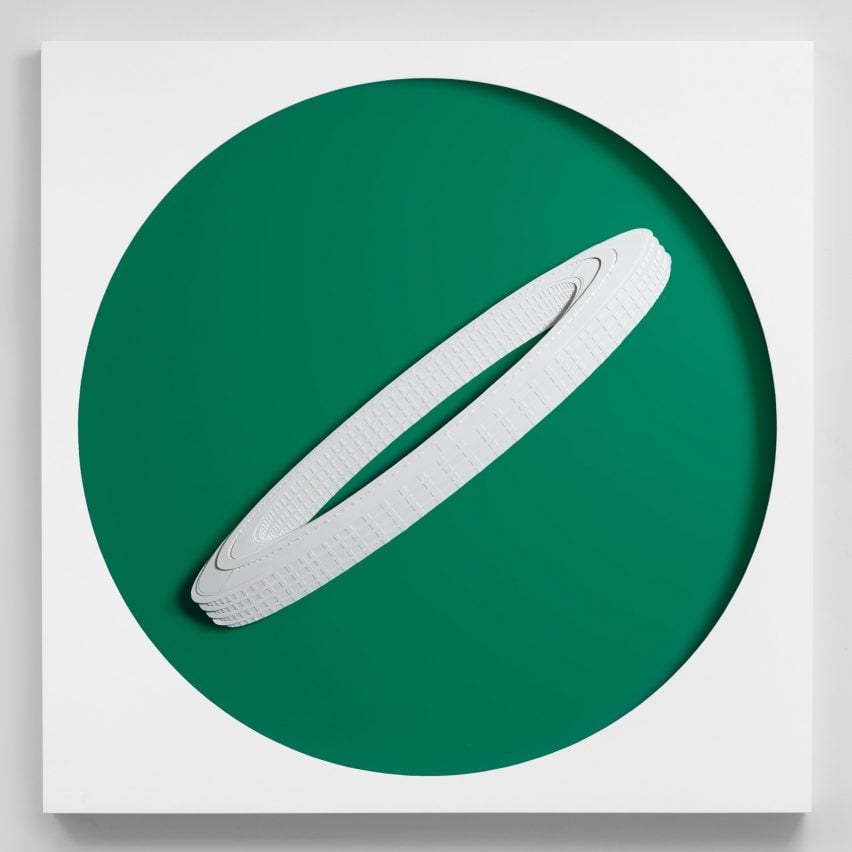
Marcus Fairs: You talked earlier about utopian ideas "coming to grief". Do utopian movements contain the seeds of their own destruction? Or do they get co-opted by dystopian forces?
Ben Langlands: I think both. I mean, something we only discovered recently is that [influential economist and close friend of Charleston's Vanessa Bell and Duncan Grant] John Maynard Keynes was also director of the British Eugenics Society at one point.
So here was this utopian thinker with this project to remake the world and imagine life in a new way and discard the discredited ways of the Victorian and Edwardian periods, which had led to so much grief and horror. But at the same time, there were these dreadful paradoxes.
People are trying to be scientific or analytical but adopting really appalling ideas as well. Yeah. So that's what I mean about being critically aware of where you are and being prepared to move on.
Marcus Fairs: Would you describe yourselves as utopians? Do you look at the future and think it's going to be great? Or are you neutral observers?
Nikki Bell: We love beauty. We love transformation and to look in a positive sense.
Ben Langlands: Yeah, we have to start from a positive point of view. But you have to acknowledge the other side of things as well.
Nikki Bell: But we're realists and we work with real buildings. We want to be aware of our surroundings and what's happening around us.
Marcus Fairs: Tell me about some of the utopias featured in the exhibition here at Charleston.
Nikki Bell: One is the Olivetti complex [at Ivrea near Turin in Italy]. It's a very interesting example of a company HQ. They created almost a whole town where all the workers' needs are catered for. There's a theatre, there's offices, housing…
Ben Langlands: A health centre. There's even an art gallery.
Nikki Bell: They're all contained within this utopia if you like. So you don't even have to leave the site. You can sort of live and die there, so to speak. I've heard that a lot of the buildings are now abandoned and a lot of them are in decay. And so things have their moments; they don't stay the same. But they tried to create a universe; a self-contained, optimistic design facility.
Ben Langlands: It's a recurring idea, isn't it? Whether it was New Lanark or Bournville, or the Lever Brothers town. People want to be productive and efficient and live in a healthy, clean way…
Nikki Bell: …that is conducive to a better life.
Ben Langlands: But they also found it very controlling to be told how to live. For Olivetti, even though they used the best architects of the time and were very progressive and many of the buildings are really beautiful, it still ends up as a very controlling environment.
People find it difficult to live with that on a daily basis. We've met people that actually did live there and some really hated it but some really loved it. So things can work both ways.
And with these new internet headquarters, it is often a similar kind of situation. If you work for Google, there's a gourmet restaurant, cinemas, theatres, your children go to school and are looked after, there's gyms and health centres and everything is provided for you but you're living in this kind of hive that in many ways is cut off from the surrounding communities.
And you're actually very, very isolated. The architect Clive Wilkinson, who designed offices for Google at the beginning, says he now regrets doing them.
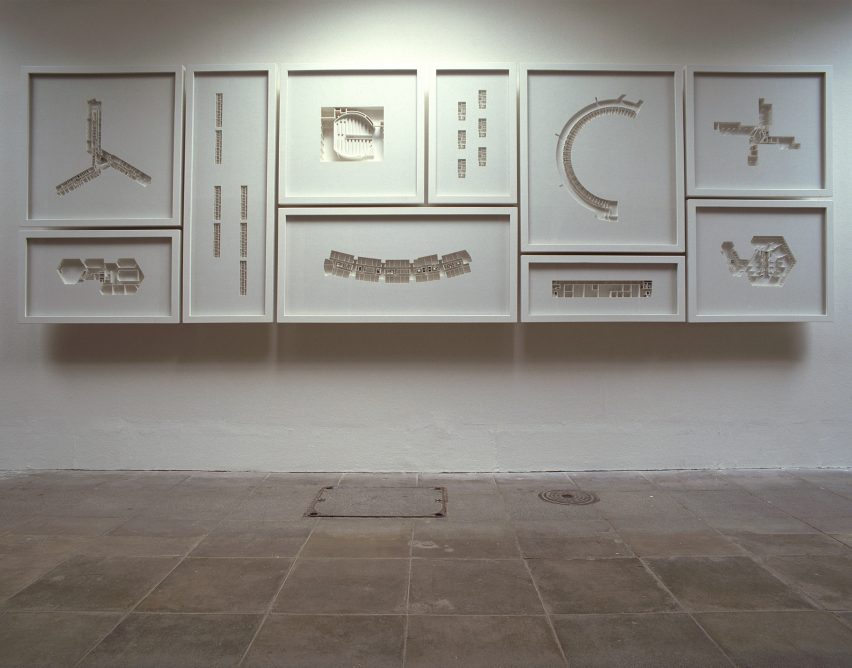
Marcus Fairs: What was the brief for the exhibition?
Nikki Bell: There wasn't a brief. It's all an experiment. It all unfolded...
Ben Langlands: The brief was, how do you respond to Charleston and Charleston's history? What does it mean to you? That's what it meant to us was a group of people who wanted to live in a new way, and were prepared to actually live it and live together, communicate, communicate with beauty and build things, you know, from scratch.
But in many ways, they were very bourgeois. They were products of their time as well. But at the same time, they were very progressive. It was a kind of counterculture of its day. So, I think we could identify with that very strongly.
Nikki Bell: It was a kind of continuous artwork. Every surface is sort of drawn on and painted on, you know, it's sort of, it's a total thing.
Marcus Fairs: So your exhibition is creating a dialogue with the utopian vision that Charleston represents.
Ben Langlands: Yeah.
Nikki Bell: That's right. It's good to keep the discussion alive and relevant.
Ben Langlands: Duncan Grant and Vanessa Bell were very much there at the outset of modernism. But things actually moved on very, very quickly. They were basically influenced by post-impressionism and in many ways they didn't really move much beyond post-impressionism in the way they painted.
But the cultural conversation rapidly moved beyond post-impressionism with the emergence of the international style and lots of other strands of modernism which, in some ways, left Duncan and Vanessa behind. Although not Virginia Woolf, who remained much more at the forefront of modernist writing and Maynard Keynes, who remained very much at the forefront of economic thinking in terms of modernism as well.
Nikki Bell: Vanessa Bell was an incredible pioneer. It was quite rare for a woman to be in her position.
Ben Langlands: It was very important what they did.
Marcus Fairs: So Charleston didn't become dystopian. It just became a bit of a historical backwater.
Nikki Bell: Yeah. Things moved on. I think, particularly with the death of Richard Rogers, for instance, people are now looking again at a more utopian way of living and, you know, with climate change, and all the issues that we're confronting at this point in time. Yeah. You know, I think people are reevaluating. I think that's a very good thing.
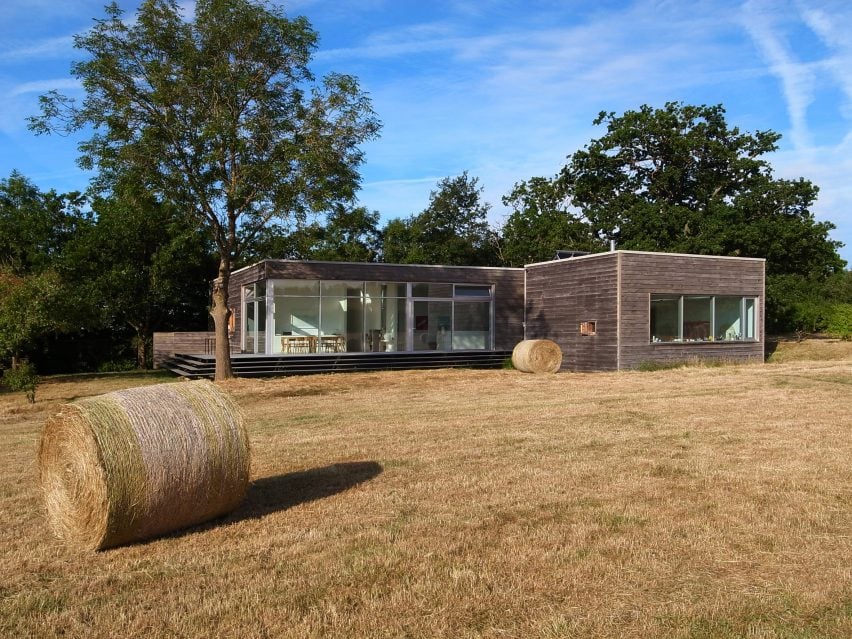
Marcus Fairs: And finally, you have your own utopia in Kent, where you built your own house.
Nikki Bell: Yes, from scratch. We discovered it by accident. We saw this filthy sign in the middle of nowhere. There was this shack on this piece of land with the most beautiful view. It was totally off grid. There was no electricity, nothing.
Ben Langlands: We just intuitively thought we could probably build something here and get permission because there's nobody to object because there aren't any neighbours. And because it was off-grid, it was a very inexpensive piece of land.
We knew that the building on it had no value of any sort so we'd be able to demolish it. And so we ended up buying it and demolishing the shack after a while. And then with the help of Atelier One, the structural engineers, we designed a new building and built it.
Nikki Bell: We made a model and told the planners we want to disappear. We didn't want to knock down any trees. We wanted to be very low impact and totally off-grid. Which we were for 20 years.
Marcus Fairs: No longer?
Nikki Bell: We got mains electricity last year.
Marcus Fairs: I've seen pictures of the house. It's quite minimalist. Why did you go for that look?
Nikki Bell: Because we're quite minimalist.
Ben Langlands: We wanted to live somewhere contemporary after years of restoring Georgian and Victorian buildings!
Langlands & Bell: Ideas of Utopia is one of three exhibitions by the duo at Charleston, Firle, Lewes, East Sussex BN8 6LL, England.
They have also curated Absent Artists, a selection of paintings depicting artists' studios and created Near Heaven, an installation that responds to Vanessa Bell's attic studio at the house. All three exhibitions run until 29 August 2022.
For details of more architecture and design events, visit Dezeen Events Guide.